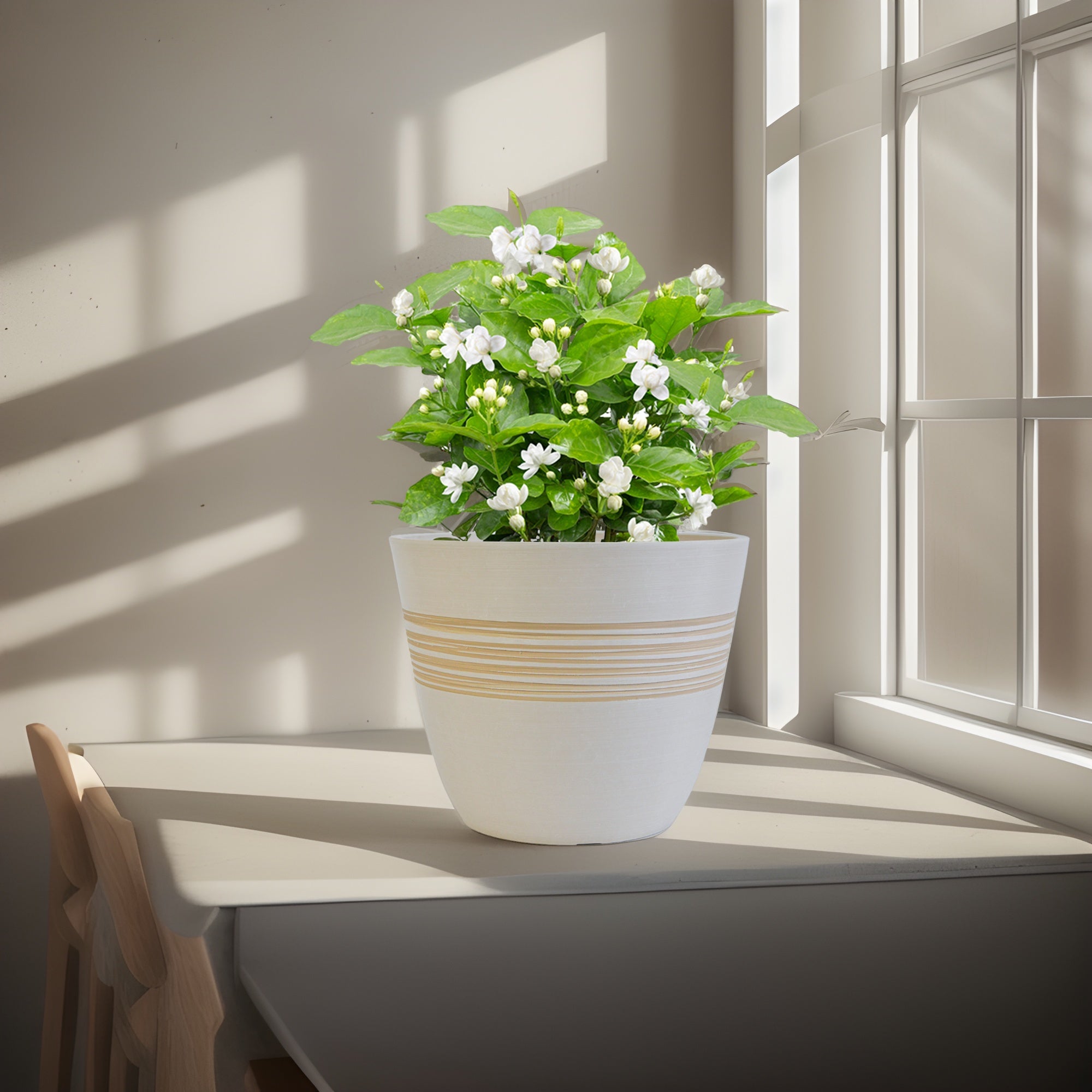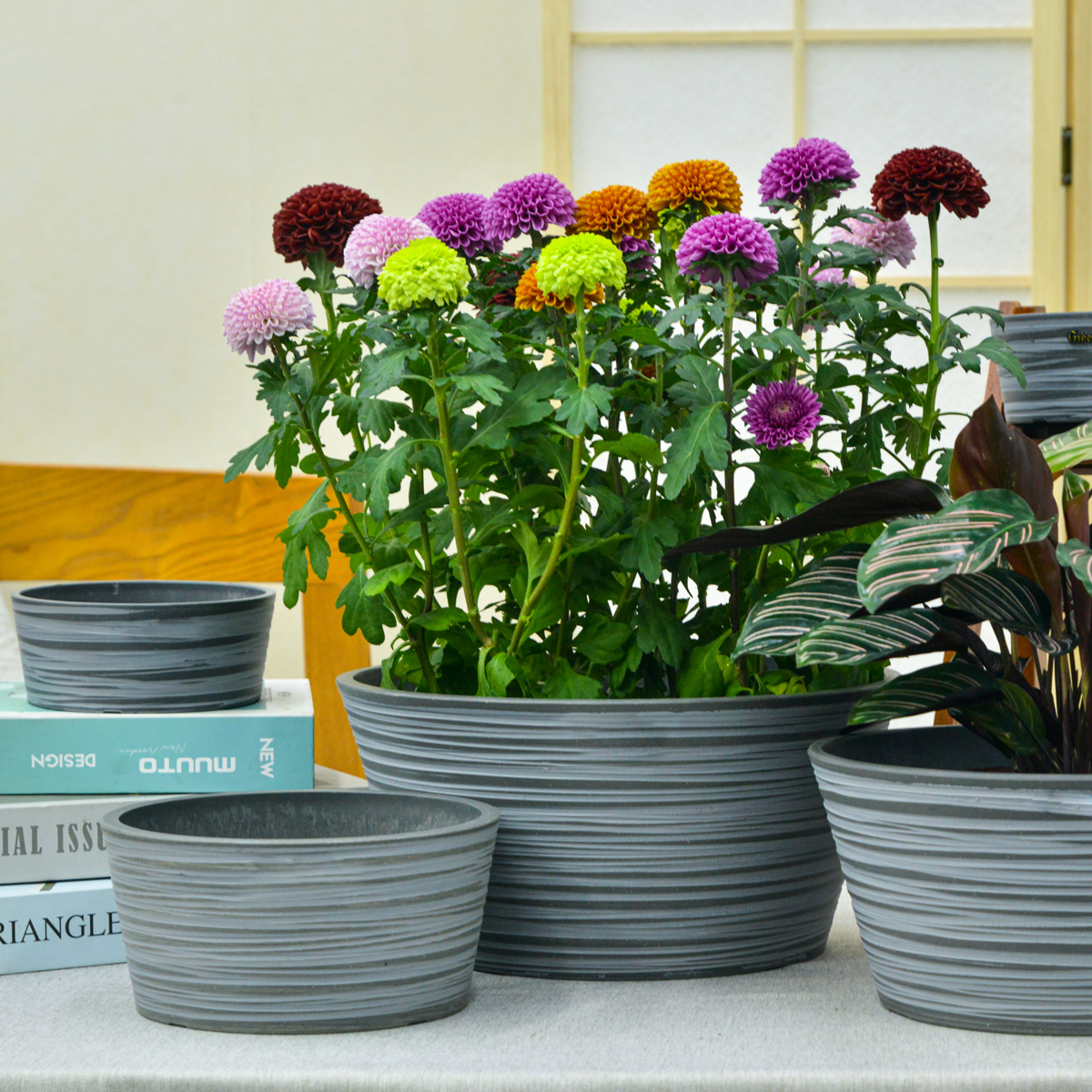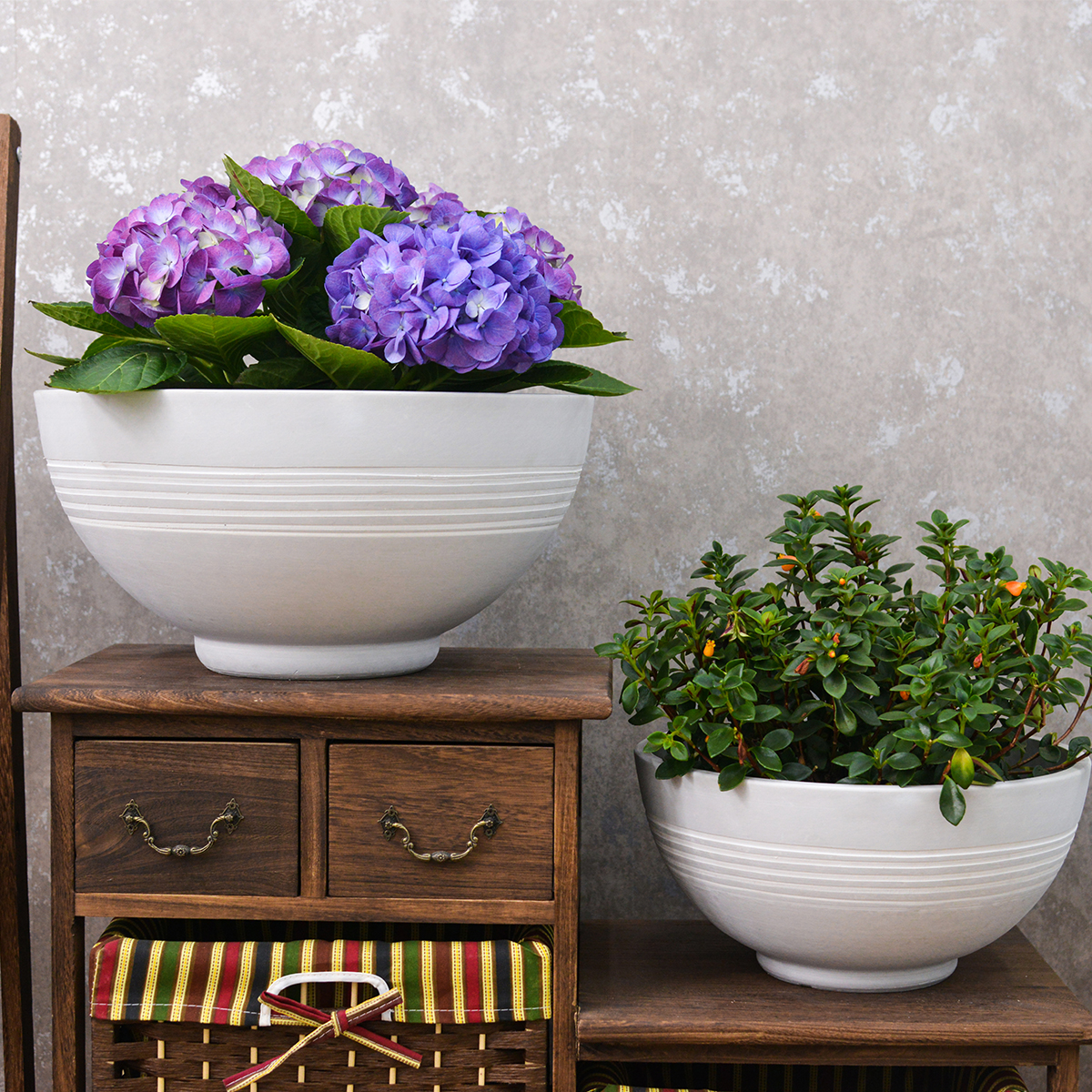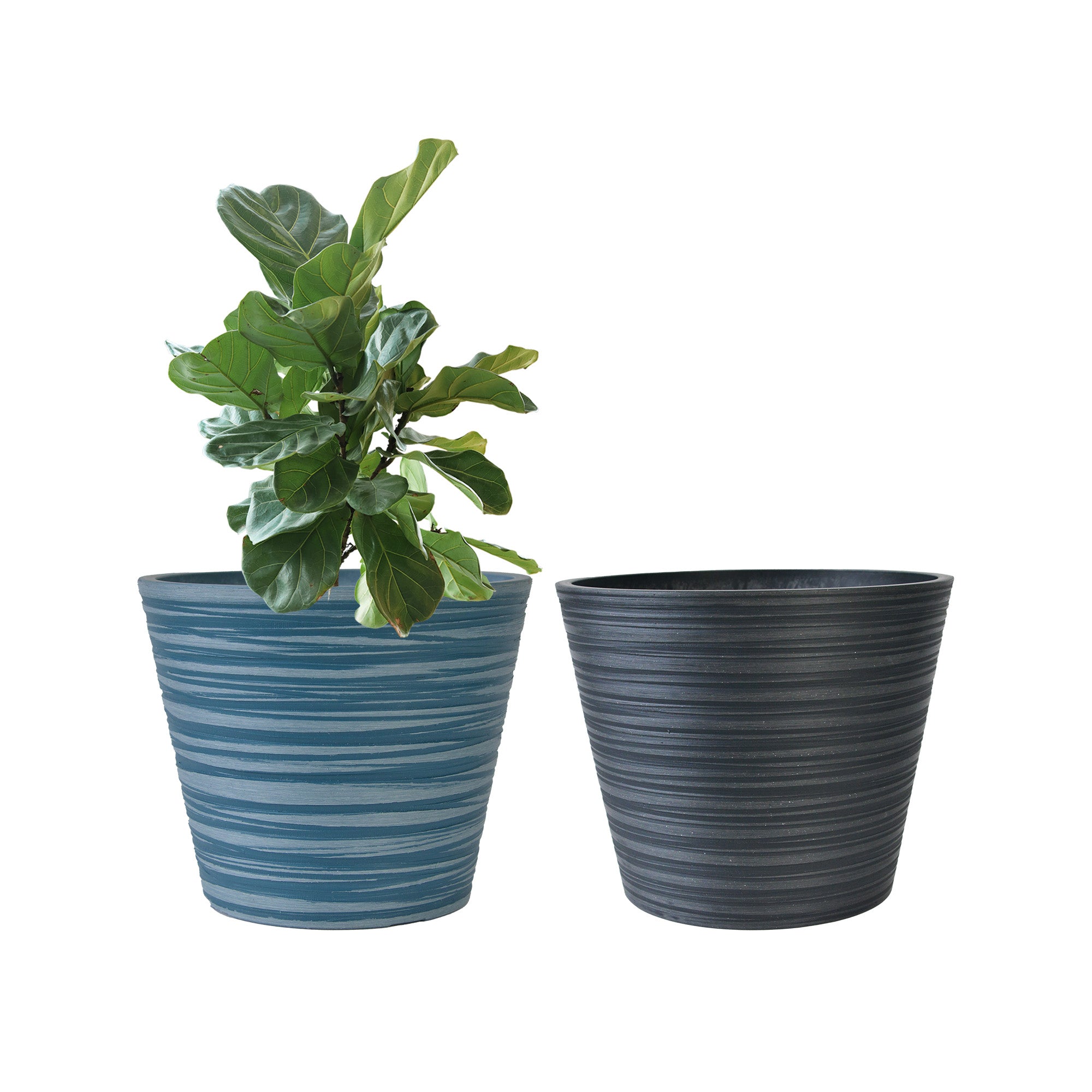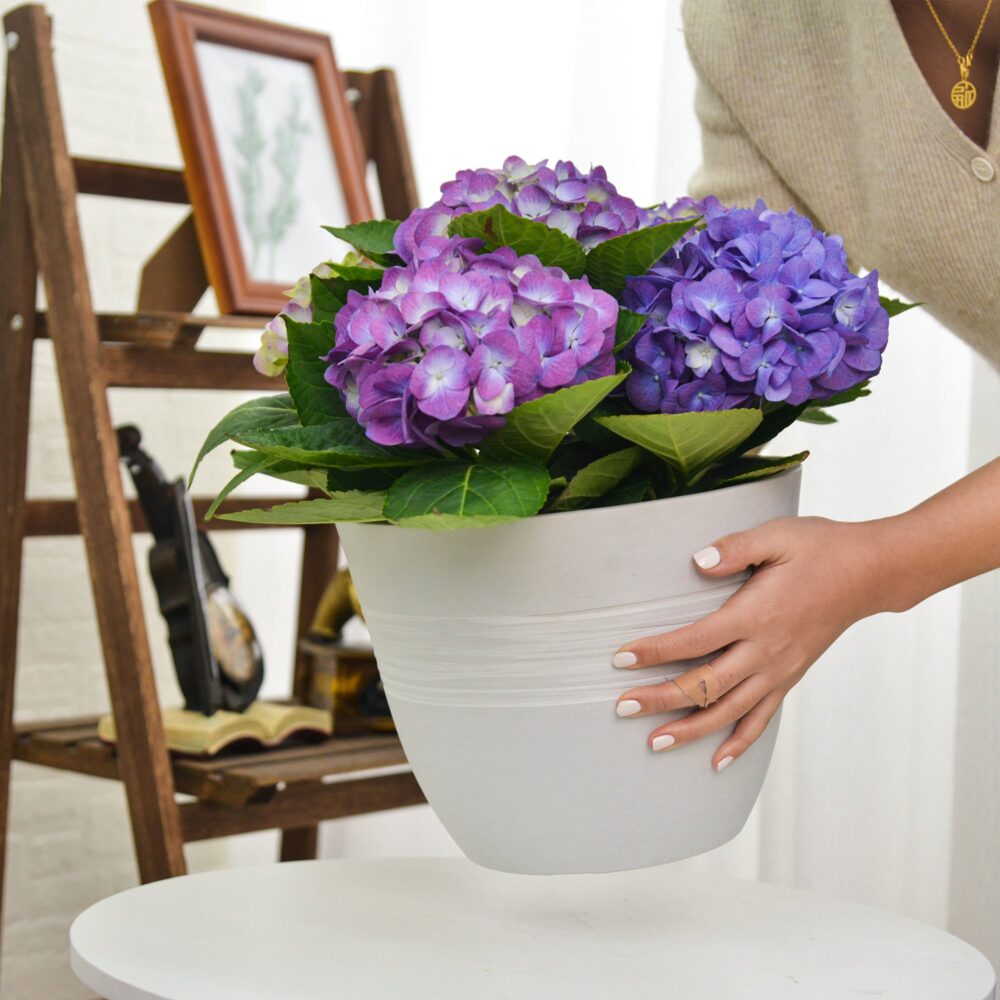Astilbe in Pots: The Complete Guide to Growing False Spirea Outdoors in Containers
Want to add feathery plumes of color and elegant texture to your shady patio, balcony, or garden? Astilbe, commonly known as False Spirea or Meadowsweet, are wonderfully graceful and rewarding choices for outdoor container gardening, especially in shaded locations. Celebrated for their showy, plume-like flowerheads, their soft color palette ranging from pinks and reds to whites, purples, and corals, their long blooming season, and their lush, fern-like foliage, Astilbe are perfect for adding a touch of refined beauty and continuous color to shady outdoor spaces. This comprehensive guide will provide you with everything you need to know to grow Astilbe successfully in outdoor pots, from selecting the best varieties and containers to mastering essential care techniques for a season filled with False Spirea blooms and elegant charm.
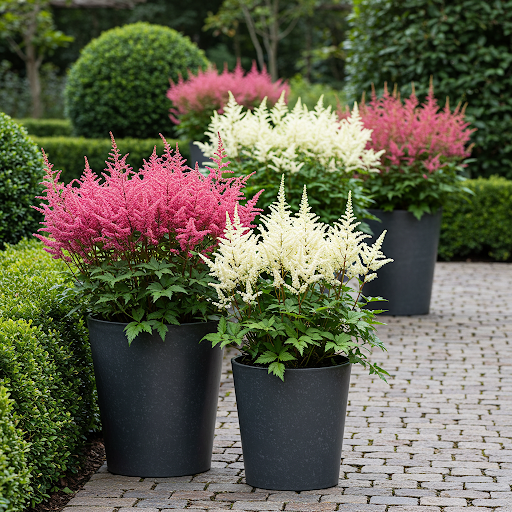
Astilbe
What are Astilbe (False Spirea)?
Astilbe, commonly called False Spirea or Meadowsweet, is a genus of herbaceous perennial plants in the Saxifragaceae family (saxifrage family). Native to Asia and North America, Astilbe are popular perennials grown for their showy, plume-like flowerheads and lush, fern-like foliage. Astilbe flowers are famous for their soft, feathery plumescomposed of hundreds of tiny flowers densely packed together in upright, branching panicles. They come in a delicate color palette, including shades of pink, rose, red, crimson, purple, lavender, coral, and white, creating a soft and romantic effect. Astilbe plants are characterized by their clump-forming, upright habit, deeply divided, fern-like foliage that is often bronze-tinged in spring, and sturdy stems. They exhibit a clump-forming, bushy growth habit, typically reaching from under 1 foot to over 4 feet in height and spread, depending on the species, cultivar, and series. They are known for their showy flower plumes, soft color palette, shade tolerance, long blooming season (summer), and elegant texture, making them an invaluable addition to gardens and containers, especially for adding refined beauty and vertical interest to shady locations.
Are Astilbe Good for Outdoor Pots?
Yes, Astilbe are well-suited for outdoor pots and container gardening, and are in fact a wonderful way to enjoy these shade-loving perennials on patios, balconies, and decks. Their clump-forming, upright habit, relatively long blooming season, tolerance of shade, and elegant flower plumes and foliage make them ideal for filling pots, patio containers, and mixed container arrangements for shady locations. Astilbe thrive in partial to full shade and bloom primarily in summer, providing a sophisticated and delightful display in containers, especially in those cooler, shadier spots where many other flowering plants won’t thrive. Their relatively easy-care nature, once established, and their refined beauty make them a fantastic and rewarding choice for container gardens of all styles, especially for creating woodland-style, cottage garden, or elegant shade displays. Growing Astilbe in pots also allows you to easily move them to optimal locations to enjoy their beauty and to provide them with the consistently moist, shaded conditions they prefer.
Ideal Growing Conditions for Astilbe in Pots:
Types of Astilbe for Pots: Many Astilbe varieties and series are excellent for pots, but consider your desired height, flower color, bloom time, and foliage interest when choosing:
- Dwarf Astilbe: (Under 1.5 feet tall) – Compact and smaller in stature, ideal for small to medium pots, window boxes, edging, and foreground plantings. Known for their more compact habit and profusion of blooms on shorter stems. Excellent for smaller containers and tighter spaces. Look for series and cultivars like ‘Pumila’, ‘Sprite’, ‘Chinensis ‘Pumila”, ‘Little Vision Series’, ‘Younique Series’ (dwarf types within series), and dwarf selections of larger series.
- Medium-Sized Astilbe: (1.5-2.5 feet tall) – Bushy and more upright than dwarf types, but still relatively compact, suitable for medium to large pots, patio containers, and mixed arrangements. Offer larger flower plumes and a wider range of colors in a manageable size for pots. Look for series like ‘Visions Series’, ‘Deutschland’, ‘Fanal’, ‘Rheinland’, ‘Montgomery’, ‘Bridal Veil’, and many japonica and arendsii hybrids. These are versatile for pots.
- Taller Astilbe: (Over 2.5 feet tall) – More upright and taller, best suited for larger pots, as thrillers in mixed containers, and for back-of-border placements in large containers. Offer a more dramatic vertical presence and larger flower heads in containers. Look for taller species and cultivars like Astilbe rivularis, Astilbe x arendsii ‘Glut’, ‘Federsee’, ‘Professor van der Wielen’, and taller selections within mixed series. Taller types may need staking in pots, especially in windy locations. For most container gardening, dwarf to medium types are more practical and easier to manage.
- Bloom Time (for Pots): Choose varieties based on your desired bloom season to extend the flowering display in your container garden. Astilbe bloom in early, mid, and late summer.
- Early Bloomers: Astilbe chinensis varieties and Astilbe x arendsii hybrids like ‘Fanal’, ‘Europa’, ‘Glut’, ‘Weisse Gloria’.
- Mid-Season Bloomers: Astilbe japonica varieties and Astilbe x arendsii hybrids like ‘Deutschland’, ‘Rheinland’, ‘Bridal Veil’, ‘Montgomery’, ‘Federsee’, ‘Professor van der Wielen’.
- Late Bloomers: Astilbe thunbergii varieties and Astilbe chinensis ‘Pumila’, Astilbe rivularis varieties, Astilbe simplicifolia hybrids like ‘Sprite’, ‘Aphrodite’.
- Foliage Interest (for Pots): Some Astilbe varieties offer particularly attractive foliage, adding texture and color even when not in bloom. Look for varieties with bronze or reddish new foliage, deeply cut leaves, or interesting leaf textures. Astilbe chinensis varieties often have more drought-tolerant and textured foliage.
Light: Astilbe thrive in partial shade to full shade. They need protection from hot afternoon sun, which can scorch their delicate foliage and fade their flower colors. Ideal locations are east-facing patios or balconies that receive morning sun and shade in the afternoon, north-facing locations, or dappled shade under trees. Morning sun is tolerated, but harsh afternoon sun should be avoided. In full shade, Astilbe will still bloom, but flower color may be less intense, and stems may be slightly weaker. Partial shade is generally considered optimal, providing bright, indirect light for best flowering and foliage color.
Soil: Astilbe need moist, well-draining soil that is rich in organic matter and slightly acidic to neutral. They are woodland plants and thrive in humus-rich, moisture-retentive conditions. Use a high-quality potting mixspecifically formulated for containers or shade-loving plants. Amend potting mix generously with peat moss, compost, leaf mold, or other organic matter to improve moisture retention, fertility, and acidity. While they need consistent moisture, they also need good drainage to prevent root rot in soggy conditions. Avoid heavy, compacted soil or garden soil in pots, as they can become waterlogged. A slightly acidic to neutral pH (around 5.5-6.5) is ideal for Astilbe.
Watering: Astilbe need consistently moist soil and should never be allowed to dry out, especially when grown in pots. Water thoroughly when the top inch of soil feels slightly dry. Water deeply until water drains out of the drainage holes. Keep the soil consistently moist, especially during hot weather and when plants are in bud or bloom. Astilbe are not drought-tolerant and are very sensitive to drying out, especially in containers. Avoid letting the soil dry out completely, even for short periods. However, also avoid overwatering and constantly soggy soil, which can lead to root rot. Astilbe prefer a “moist but not soggy” soil environment. Watering frequency will depend on weather conditions, light levels, pot size, and plant size. During hot summer months, you may need to water daily or even twice a day for smaller pots in partial shade or windy locations. Check soil moisture regularly and adjust watering accordingly. Water at the base of the plant or use gentle watering to avoid splashing water on the delicate flowers and foliage.
Temperature: Astilbe are cold-hardy perennials that thrive in moderate temperatures. They perform best in temperatures between 50°F to 75°F (10°C to 24°C). They bloom most prolifically in spring and early summer when temperatures are cool to moderate. Hot summer temperatures (above 85°F/29°C) can cause them to slow down or temporarily stop blooming, especially in hot summer climates. In very hot summer areas, provide shade and consistent moisture. Astilbe are cold-hardy to USDA zones 3-8 or 4-8, depending on the species and cultivar. They need a period of winter chill to bloom properly in subsequent years. In colder zones, potted Astilbe can be left outdoors to overwinter, but provide some protection from extreme winter conditions, especially for the roots in containers. In warmer zones (above zone 8), Astilbe may struggle with heat and may benefit from extra shade and moisture, or may be grown as annuals. Potted Astilbe are easy to move to optimal locations to enjoy their beauty and provide protection from temperature extremes.
Fertilizer: Astilbe are moderate feeders and benefit from regular fertilization to support their blooming and healthy foliage growth. Consistent fertilization encourages strong growth and prolific flowering. Fertilize in early spring as new growth emerges, and again lightly after the first flush of blooms to encourage continued flowering or foliage health. Use a balanced slow-release granular fertilizer incorporated into the potting mix at planting time, or apply a balanced liquid fertilizer (e.g., 10-10-10 or 20-20-20) diluted to half strength, every 4-6 weeks during the growing season (spring to early summer). For containers, more frequent feeding (e.g., every 6 weeks) may be beneficial due to leaching from watering. Avoid over-fertilizing, which can lead to leggy growth and fewer blooms. Choose a fertilizer formulated for flowering perennials, or a balanced fertilizer.
Choosing the Right Pots for Astilbe:
Suitable Pot Types: Astilbe are adaptable to various pot types, including terracotta, ceramic, plastic, resin, and even metal containers, as long as drainage and moisture retention are managed appropriately. Consider these factors when selecting pot types for Astilbe:
- Plastic Pots: Lightweight, inexpensive, retain moisture well, and are available in various colors and styles. Excellent choice for Astilbe, especially for moisture retention in shady locations and for larger pots that need to be moved. Choose good quality plastic pots with drainage holes. Plastic pots help retain moisture, which is beneficial for moisture-loving Astilbe, especially in partial shade.
- Resin Pots: Lightweight, durable, available in various styles mimicking terracotta or ceramic, and offer a balance of drainage and moisture retention. A good alternative to heavy ceramic pots, and often more durable than terracotta or plastic. Resin pots also retain moisture well, similar to plastic.
- Ceramic Pots: Glazed ceramic pots are a good choice, available in many decorative styles, can add a decorative element to your container garden, and retain moisture reasonably well. Ensure good drainage. Choose based on your desired aesthetic and moisture retention needs. Unglazed terracotta may dry out too quickly for moisture-loving Astilbe, especially in warmer or windier locations.
- Terracotta Pots: Porous, allow good aeration and drainage, and aesthetically classic and warm-toned, complementing Astilbe’s natural, woodland charm. Terracotta can be used for Astilbe, especially if you are careful with watering to maintain consistent moisture, and amend soil well with moisture-retentive organic matter. Terracotta may be more suitable in cooler, shadier, or more humid climates where drying out is less of a concern.
- Metal Containers: Metal containers can also be used, providing a more modern or industrial look. Ensure good drainage and consider that metal pots can heat up more quickly in sun, so may be better suited for full shade locations for Astilbe.
Drainage: Good drainage is essential for Astilbe to prevent root rot, although they prefer consistently moist soil. Ensure your chosen pot has drainage holes at the bottom. Avoid pots without drainage holes. Adding a layer of perlite or pot shards at the base of the pot is recommended to further improve drainage, especially in heavier pots or if you tend to overwater. Elevating pots slightly on pot feet or bricks can further improve drainage and air circulation around the base.
Pot Size: Choose pot sizes appropriate for the type and mature size of the Astilbe you are planting, and the desired visual impact. Astilbe have moderately sized root systems and need adequate space for healthy growth and flowering.
- Small Pots (Dwarf Astilbe, Individual Plants): For dwarf Astilbe varieties or individual plants in small pots, use pots that are at least 8 inches in diameter and at least 8 inches deep. These are suitable for very compact varieties or for starting individual plants.
- Medium Pots (Medium-Sized Astilbe, Patio Containers, Combinations): For medium-sized Astilbe varieties, patio containers, or mixed arrangements, use pots that are 12-16 inches in diameter or larger and at least 10-12 inches deep for individual plants, or larger patio containers for multiple plants or mixed arrangements.
- Large Pots (Taller Astilbe, Dramatic Displays): For taller Astilbe varieties or more dramatic displays, use pots that are 16 inches in diameter or larger and at least 12-14 inches deep to accommodate their larger root systems and top growth.
Color and Style: Choose pot colors and styles that complement your Astilbe blooms and foliage and your outdoor décor, and enhance their elegant, refined nature. Neutral colored pots in whites, creams, grays, charcoal, black, or natural stone can create a sophisticated and understated backdrop that allows the soft colors and delicate textures of Astilbe flowers and foliage to truly shine. Cool-toned pots in soft blues, greens, or purples can echo and enhance the cool, shade-loving nature of Astilbe and create a harmonious, woodland-inspired look. Simple, classic pot styles often best showcase the natural beauty of Astilbe. Consider the overall style of your patio or garden and choose pots that harmonize with the surroundings, and enhance the tranquil, shady, and refined ambiance you wish to create.
Essential Care Tips for Thriving Astilbe in Outdoor Pots:
- Watering: “Keep Soil Consistently Moist, Never Allow to Dry Out”. Water thoroughly and regularly to maintain consistently moist soil, especially during warm weather and active blooming. Water deeply when the top inch of soil feels slightly dry. Never allow the soil to dry out completely. Consistent moisture is absolutely key for Astilbe in pots.
- Sunlight: Provide Partial Shade to Full Shade (Morning Sun or Dappled Shade Ideal). Place Astilbe pots in a location that receives partial shade to full shade, with protection from harsh afternoon sun. Morning sun or dappled shade is ideal. Avoid full sun, especially in hot climates.
- Fertilizing: Fertilize in Early Spring and Lightly After First Bloom. Fertilize in early spring as new growth emerges, and again lightly after the first flush of blooms. Use a balanced liquid or slow-release fertilizer. Avoid over-fertilizing.
- Deadheading (Optional, for Tidiness): Deadheading spent flower plumes is not strictly necessary for continued blooming, but you can remove faded plumes for a tidier appearance and to prevent self-seeding if desired. Snip off faded flower stalks at the base.
- Dividing (Every 3-4 Years, to Rejuvenate): Astilbe clumps can become crowded after 3-4 years, which can reduce flowering. Divide clumps in early spring or fall every 3-4 years to rejuvenate plants and maintain vigor. Dig up the clump, divide it into smaller sections, and replant in fresh potting mix.
- Winter Care (Cold Climates): In USDA zones 3-7, potted Astilbe can be left outdoors to overwinter. Provide some protection for the roots in containers by mulching around the base of the plants, wrapping pots with burlap or bubble wrap, or moving pots to a sheltered location like an unheated garage or shed, especially in very cold or exposed areas. Ensure pots do not completely dry out during winter dormancy, but do not keep them soggy either.
- Pest and Disease Control: Astilbe are generally relatively pest and disease-resistant, but monitor for occasional pests like aphids, spider mites, and Japanese beetles. Powdery mildew can occur if air circulation is poor or humidity is high. Ensure good air circulation by spacing plants adequately, avoid overcrowding, and avoid overhead watering in the evening. Treat any pest or disease issues promptly with insecticidal soap, horticultural oil, neem oil, or appropriate fungicides if necessary. Slugs and snails can sometimes be a problem; use slug bait or traps if needed.
Popular Astilbe Cultivars for Pots (by Series/Color/Size/Bloom Time):
- Visions Series (Terra Nova Nurseries): Compact, sturdy habit, vibrant colors, long bloom season, good for pots. ‘Visions in Pink’, ‘Visions in Red’, ‘Visions in White’, ‘Visions of Sugar Plum’, and other Visions colors.
- Younique Series (Terra Nova Nurseries): Dwarf, very compact habit, early blooming, intense colors, ideal for small pots and edging. ‘Younique Carmine’, ‘Younique Pink’, ‘Younique Lilac’, ‘Younique White’, and other Younique colors.
- Little Vision Series (Terra Nova Nurseries): Dwarf, extremely compact, miniature habit, early blooming, tiny plumes, ideal for fairy gardens, miniature pots, and tight spaces. ‘Little Vision in Pink’, ‘Little Vision in Purple’, ‘Little Vision in White’.
- Deutschland (Arendsii Hybrid): Medium height, classic white plumes, mid-season bloomer, reliable and elegant for pots. ‘Deutschland’.
- Fanal (Arendsii Hybrid): Medium height, intense crimson-red plumes, early bloomer, vibrant color for pots. ‘Fanal’.
- Rheinland (Arendsii Hybrid): Medium height, bright rose-pink plumes, mid-season bloomer, cheerful color for pots. ‘Rheinland’.
- Bridal Veil (Japonica Hybrid): Medium height, elegant creamy-white, drooping plumes, mid-season bloomer, graceful for pots. ‘Bridal Veil’.
- Pumila (Chinensis Species): Dwarf, spreading habit, late bloomer, lavender-pink plumes, good groundcover or edging type for larger containers. Astilbe chinensis ‘Pumila’.
- Sprite (Simplicifolia Hybrid): Dwarf, spreading habit, late bloomer, shell-pink plumes, delicate and charming for smaller pots or combinations. Astilbe simplicifolia ‘Sprite’.
In Summary:
Growing Astilbe (False Spirea) in outdoor pots is a wonderfully rewarding way to add feathery plumes of color and elegant texture to your shady patios, balconies, and gardens. Their showy flower plumes, soft color palette, shade tolerance, and refined beauty make them a perfect choice for container gardeners seeking to create tranquil and elegant shade displays. By providing partial shade to full shade, rich, moist, well-draining potting mix in pots with good drainage, consistent moisture but avoiding soggy soil, fertilizing in spring and after first bloom, and choosing pot sizes and styles that complement their graceful nature, you can easily cultivate thriving Astilbe plants in pots and enjoy their captivating, colorful displays each summer, year after year.
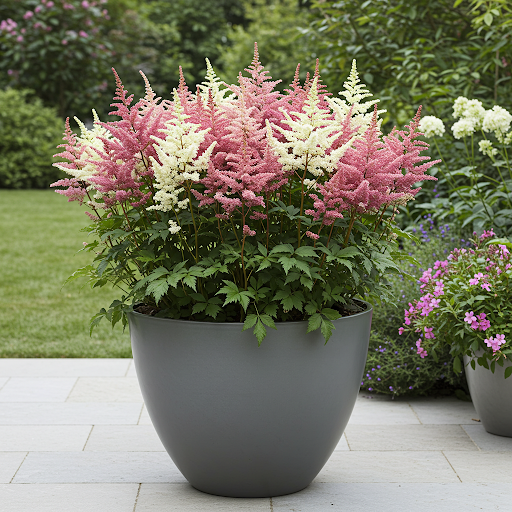
Astilbe
For more detailed botanical information and to explore the diverse world of Astilbe, you can visit the Wikipedia page on Astilbe.
Important Note: Astilbe plants are generally considered non-toxic to humans and pets, making them a safe and attractive choice for households with children and animals. The primary care benefits of Astilbe in pots are their showy and elegant flower plumes, soft and cool color palette, shade tolerance, and refined texture, bringing enduring beauty and graceful charm to your shady outdoor spaces for many years. With these simple care practices, you can enjoy a season filled with the abundant charm of Astilbe in your outdoor containers.
Planter for Indoor Outdoor Plants, Set of 2 Modern Decorative Plant Pots with Drainage Hole, Decorative Flower Pots
By greenship-seo|2025-04-10T07:46:01+00:00January 9, 2025|Categories: Hand-carving Series|Tags: Decorative Flower Pots, Self-Watering Pots|
11THD
By greenship|2024-08-13T02:52:20+00:00August 13, 2024|Categories: Hand-carving Series|
KC3-09k
By greenship|2024-08-16T06:24:36+00:00August 16, 2024|Categories: Hand-carving Series|
Planter 5 in W / 8 in W / 12 in W or Indoor Outdoor Plants, Modern Decorative Plant Pots with Drainage Hole, Decorative Flower Pots
By greenship-seo|2025-04-10T06:37:58+00:00January 16, 2025|Categories: Hand-carving Series|Tags: Decorative Flower Pots|
11TH
By greenship|2024-08-13T02:50:25+00:00August 13, 2024|Categories: Hand-carving Series|
Planter for Indoor Outdoor Plants, Set of 2 Modern Decorative Plant Pots with Drainage Hole, Decorative Flower Pots
By greenship-seo|2025-01-14T12:26:44+00:00January 14, 2025|Categories: Hand-carving Series|Tags: Decorative Flower Pots|

